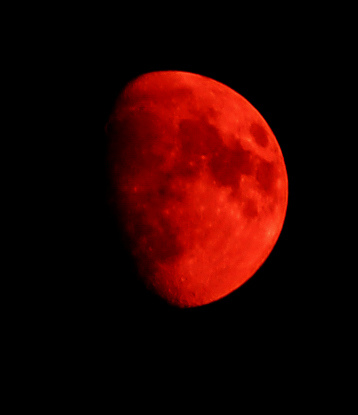
Many Pretribulationists do not identify the sixth seal cosmic disturbances with the cosmic disturbances associated with the Lord’s Return in Matthew 24.
The most common reason I have heard is that Revelation states that the moon becomes a “blood red” color but in Matthew 24 it states that the moon does “not give its light.” Therefore, according to them, these are two completely separate events.
“the sun became as black as sackcloth made of hair, and the full moon became blood red” (Rev 6:12).
“the sun will be darkened, and the moon will not give its light” (Matt 24:29).
This is a classic case of hyper literalism interpretation. Can you imagine if we applied such wooden principles to the gospels? For example, the story of Jesus calming the storm has Matthew’s account with Jesus saying, O men of little faith; Mark has Have you no faith?; Luke has Where is your faith? According to their logic, Jesus must have calmed the storm three different times. Many more examples could be adduced from the gospel writers having the inspired freedom to use their own expressions and paraphrases.
Writers had the literary freedom to express vivid images about monumental significance. It is naive to pit the parallelism between John and Jesus simply because John adds the element about the diminish light from a red moon and Jesus simply states the fact of a diminished light.
The same can be said about the description of the sun:
Jesus: “the sun will be darkened”
John: “the sun became as black as sackcloth made of hair“
Are we suppose to believe that by necessity Jesus and John are talking about two different events because John augments his imagery? Of course not.
And what about that little important thing called . . . context. Never mind the fact that this celestial sign takes place when Jesus says that the elect are gathered at the Great Tribulation (Matt. 24:21-22, 29-31), and consistently John says the same thing (Rev 7:14). Is that a coincidence? The burden of proof is on them to show that. As for me, I am going with the natural reading.
